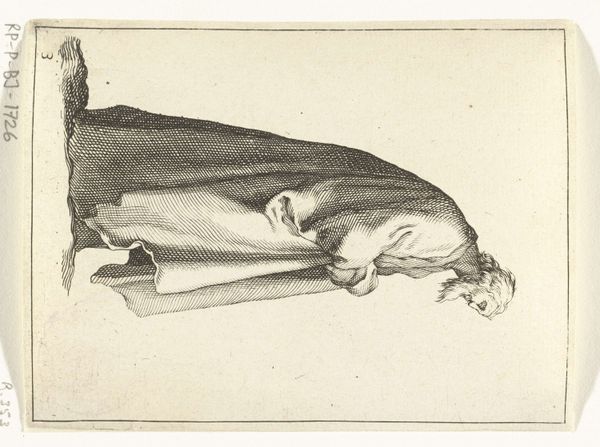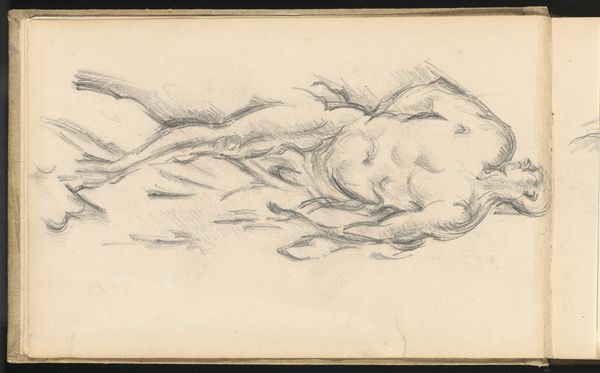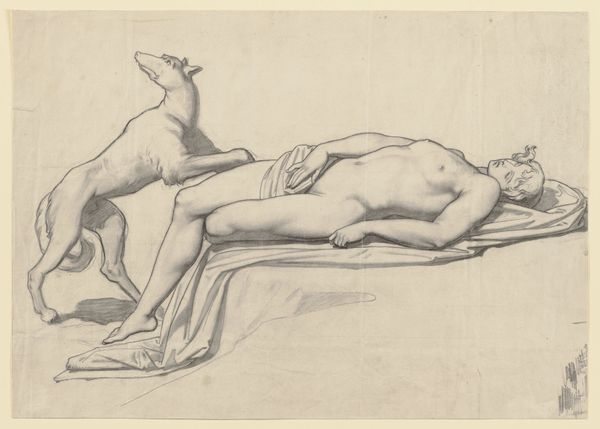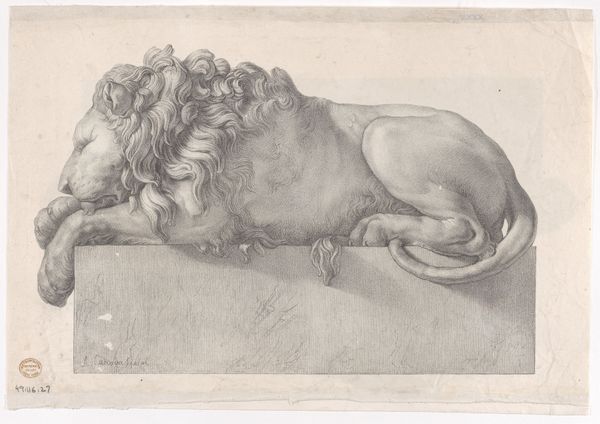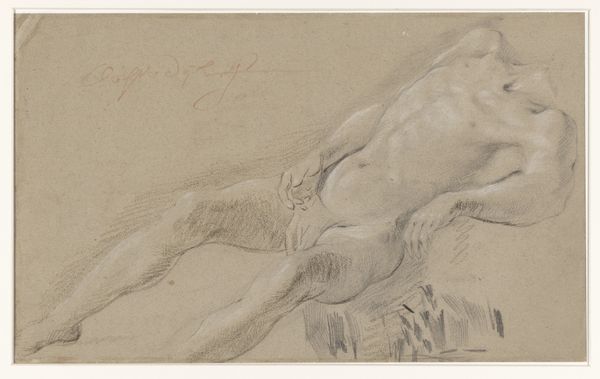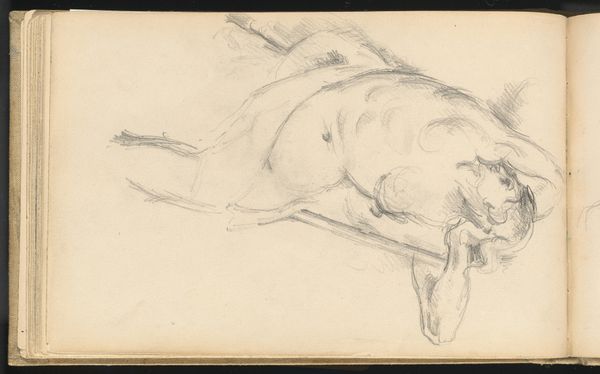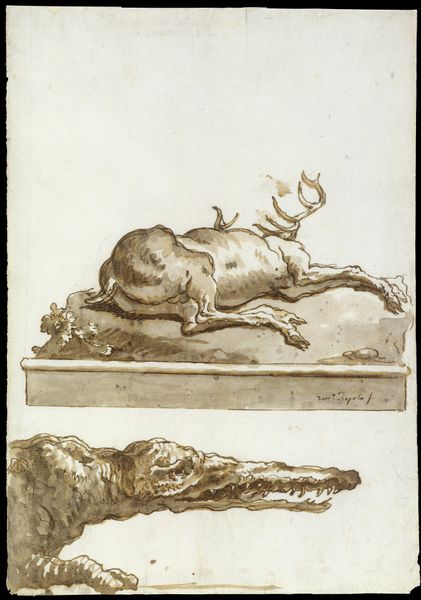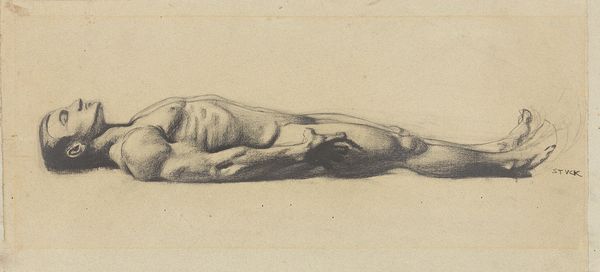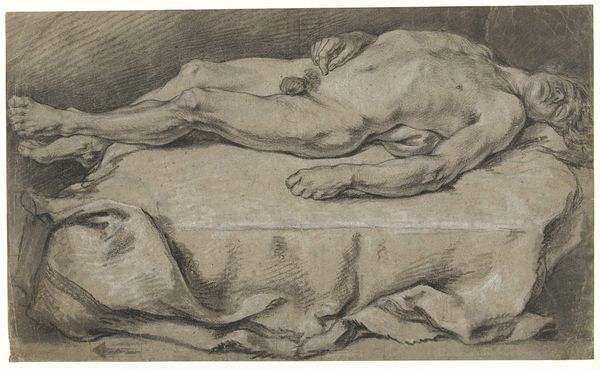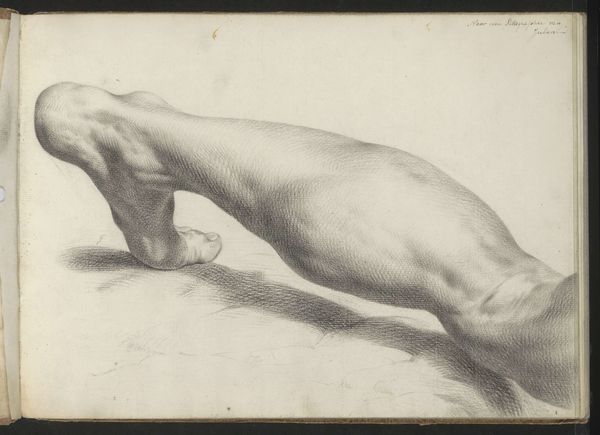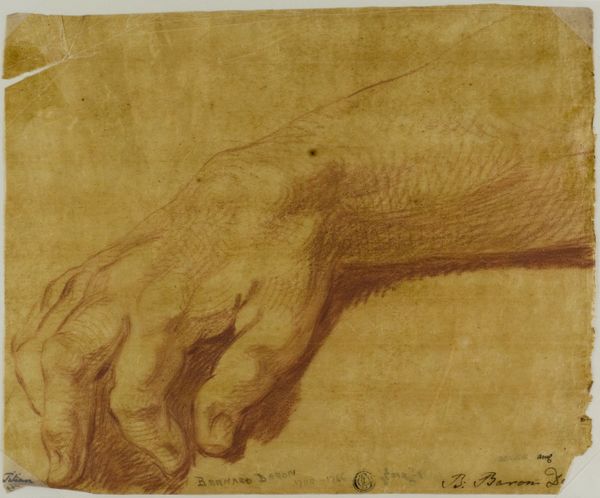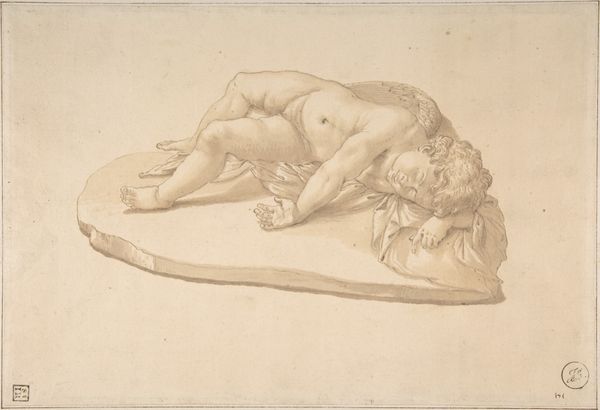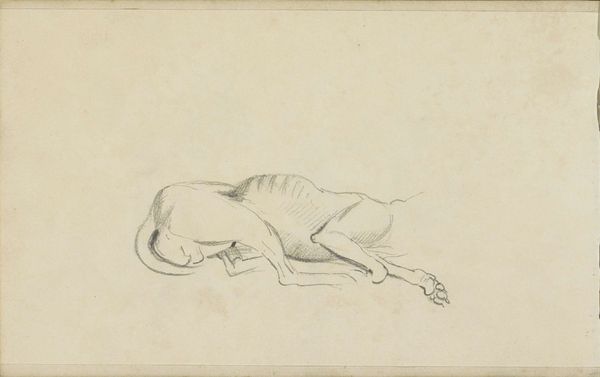
Drawing after a Lithograph of a Recumbent Lion. 1770 - 1822
0:00
0:00
drawing, print, pencil
#
drawing
#
animal
#
neoclassicism
# print
#
figuration
#
pencil
Dimensions: Sheet: 7 3/8 x 12 3/8 in. (18.7 x 31.4 cm)
Copyright: Public Domain
Curator: This drawing, “Drawing after a Lithograph of a Recumbent Lion,” was made by Antonio Canova sometime between 1770 and 1822. The piece, a pencil drawing now held at the Metropolitan Museum, evokes for me a funerary monument. Editor: That's interesting. I initially see a formal study, really. Notice how Canova carefully renders light and shadow to suggest three-dimensionality. The lion seems poised between monumentality and quiet observation, which creates an inherent visual tension. Curator: Precisely. The image calls to mind antique sculptures, often associated with memorial statuary. Lions frequently appear as guardians or symbols of courage and regality in such contexts. What draws my attention is how he's replicated another print form. It is several steps removed from 'life.' Editor: Yes, the act of copying underscores its nature as an exercise in form. Observe the economical use of line, particularly in defining the lion's mane and musculature. It almost reminds one of architectural renderings of the time, favoring precision and clarity over expressionism. Curator: Though the restraint is part of the artistic language of Neoclassicism. This choice reflects the period's preference for order and reason. It’s about instilling certain ideas – ideals, if you will - with a classical visual shorthand. What is conveyed by depicting a creature celebrated for its ferocity in repose? It invites a specific mood. Editor: Agreed, and further to that idea, look at the geometrical form beneath the lion. This blocky feature anchors it to a constructed, perhaps fabricated, reality – an idea echoed by its being, as you observed, a copy of a lithograph. The image exists only through these mediations. It adds layers of intellectual distance to the piece, something beyond a naturalistic study of the animal. Curator: The image leaves me contemplating the nature of permanence. As it prompts viewers to reflect upon ideals embodied in classical imagery and the symbolic power animals gain through cultural projection. Editor: For me, I keep returning to the contrast between the power of the lion as a symbol and the very deliberate restraint of its rendering here. It creates an image about its own construction – a layered statement on the intersection of form and meaning.
Comments
No comments
Be the first to comment and join the conversation on the ultimate creative platform.
